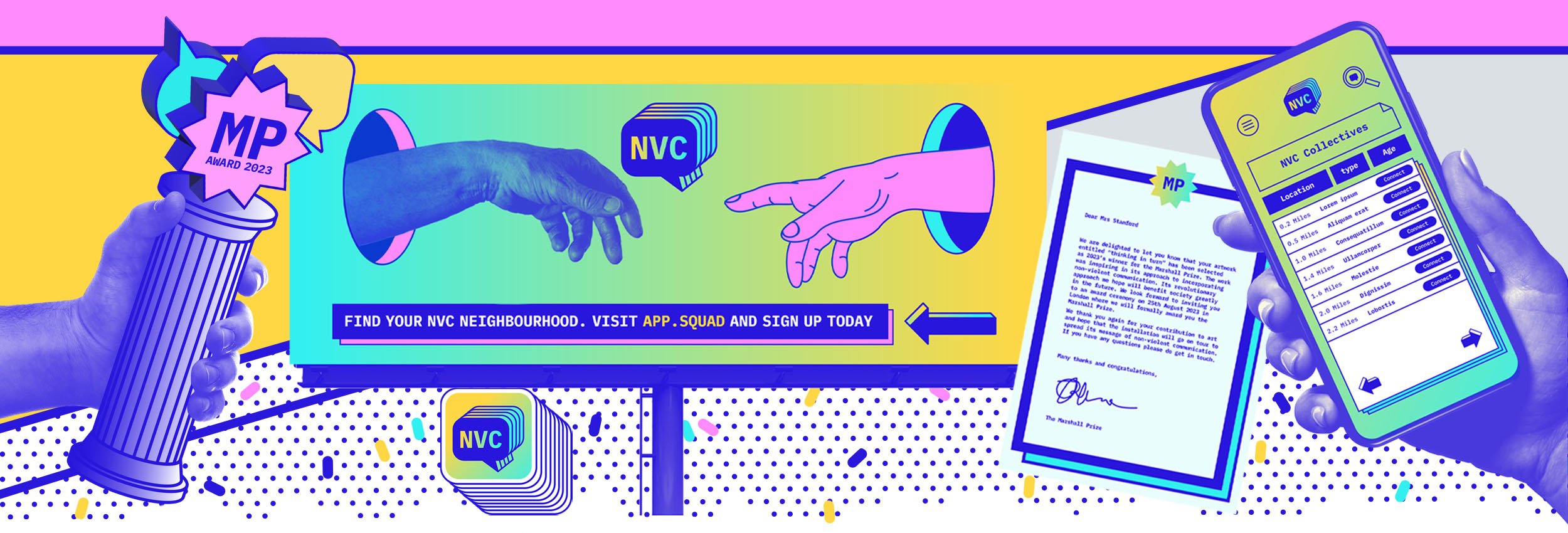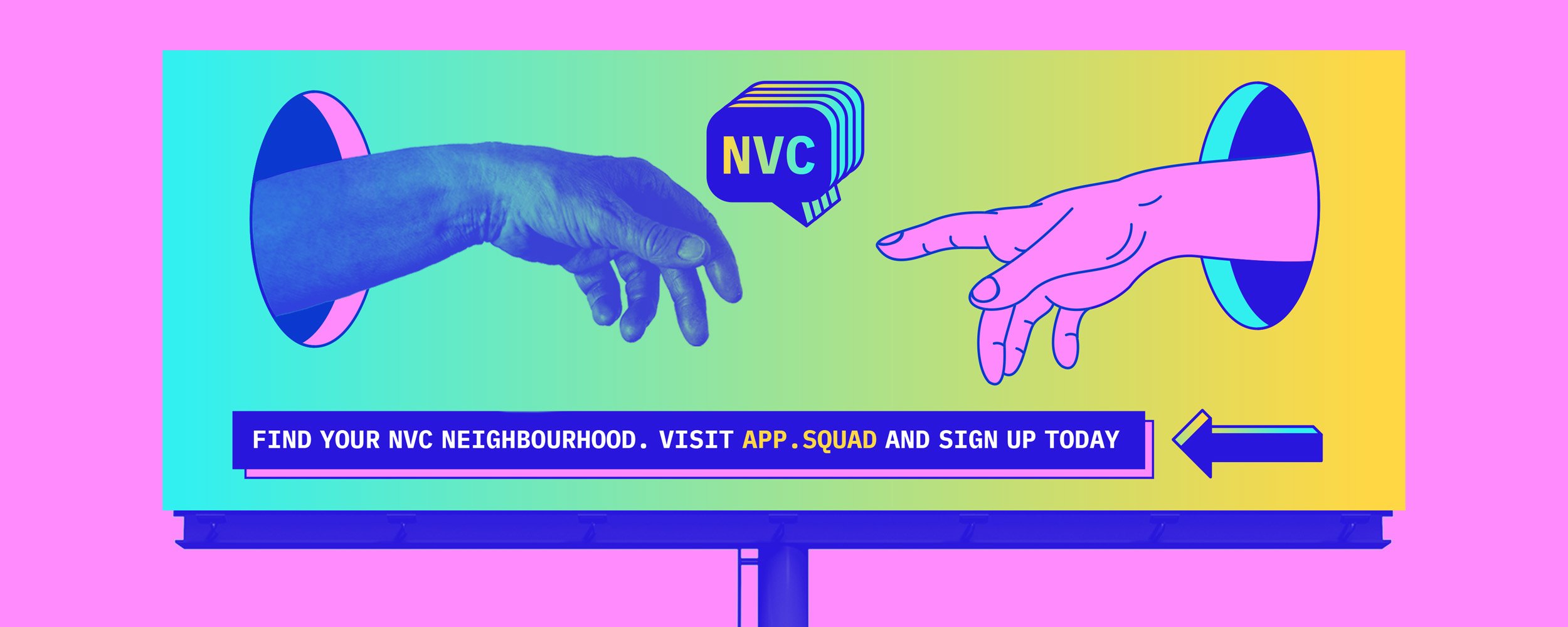Possible, Plausible and Just Futures for Civil Society
Introduction | Future One | Future Two | Future Three | Observations & Conclusions

Future Three: Developing new systems of care
Exploring how empathetic connection and communication can help to overcome fear and hatred
Recurring concerns: intergenerational unfairness; xenophobia; scarcity; debt; system failure; climate anxiety
Recurring hopes: developing social connections and relations; developing new systems of care in which people are not marginalised and care is equitably distributed; and developing somatic and global/indigenous practises.
What is care?
Rather than health or social care, care in this context relates to respect, empathy, and communicating and learning across boundaries.
Alienation and division
Many of the possible futures our participants described were peppered with crises that might deepen inequalities, entrench individualism, and foster fear and hatred. These settings included: rising levels of xenophobic and racist crime, the widespread implementation of automation in the workplace, the realisation of the Metaverse, the dramatic failure of social care, shortages of goods, and a rebellion against consumerism.
In these settings, initiating acts of care would require recognising our own needs as well as the needs of those we are alienated from and extending empathy and compassion in spite of and across divisions.

Nonviolent Communication™️
The participants explored how the principles of Nonviolent Communication™️ could form a basis for this system of care and connection across boundaries.
The goal of Nonviolent Communication™️ (NVC) is to achieve interpersonal harmony and build non-coercive cooperation through the deployment of “four key concepts: observations, feelings, needs and requests.” NVC requires practitioners to notice without evaluating, and make requests that reflect their own needs without centering value judgements.
The Centre for Nonviolent Communication’s Needs Inventory groups human needs in the following categories: Connection; Physical Wellbeing; Honesty; Play; Peace; Autonomy; and Meaning. Recognising and responding to our own and others’ needs across these six indices is holistic and fully human, and helps set aside judgement about who might deserve to have which needs fulfilled.

As a: [ busy young person working several zero-hours contract jobs ]
I need: [ to quickly find NVC groups in my local community ]
So that I can: [ develop connections with my neighbours ]
In order to: [ support my needs for self-actualization and wellbeing ]
The intervention:
The Intergenerational Neighbourhood Practice of Nonviolent Communication™️
After more than a decade of tumultuous social uprising, an Intergenerational Neighbourhood Practice of Nonviolent Communication™️ is established to build bridges across deepening social divisions.
Social divisions have continued to widen among multiple sectarian lines. Health and social care systems did not recover from the early 2020s pandemic, and are close to collapse; this systemic failure increases mutual suspicion and distrust between the young and old, while the collapse of supply chains drives deeper localism and fear of outsiders, leading to a surge in xenophobic hate crimes; poverty increases as governments tackle debt, prices rise, and sustainable luxury consumerism persists for a few. Life at the intersection of multiple crises increases fear and distrust.
Meanwhile, the practice of NVC has gained traction across a number of domains: one well-known practitioner has recently won the Nobel Peace Prize in recognition of their efforts to reduce global conflict; primary schools throughout the UK have eradicated bullying using NVC; informal NVC collectives are popping up all over social media; and the principles of NVC were central to the work of a recent Marshall Prize winner.
After riots sweep through major cities, the Intergenerational Neighbourhood Practice of NVC is rolled out through communities as the result of a coordinated campaign from civil society and empathetic, collaborative relationships are developed at a hyper-local level, between neighbours who otherwise have little in common. This leads to the establishment of well-developed hyperlocal communities of care.

Recognising and responding to our own and others’ needs is holistic and fully human.
Participants explored some potential unintended consequences, such as:
A positive consequence could be that it lays the groundwork for wider divestment from existing systems that maintain violence e.g. policing and prisons and create new communal places.
It could create new physical and emotional infrastructure — new communal spaces and new social connections across boundaries.
Unintended tensions and inequality could be created, for example, increased tensions as newcomers reject neighbourhood culture, exposing people to unsafe spaces. It could lead to an increase in housing inequality (as some neighbourhoods prosper and others, not practising NVC, do not).
It could create space for change but there isn’t always control over who instigates change. There is a possible unintended consequence that the original instigators of change become displaced by other groups, organisations or governments that employ the same message for different ends.
Possible, Plausible and Just Futures for Civil Society


